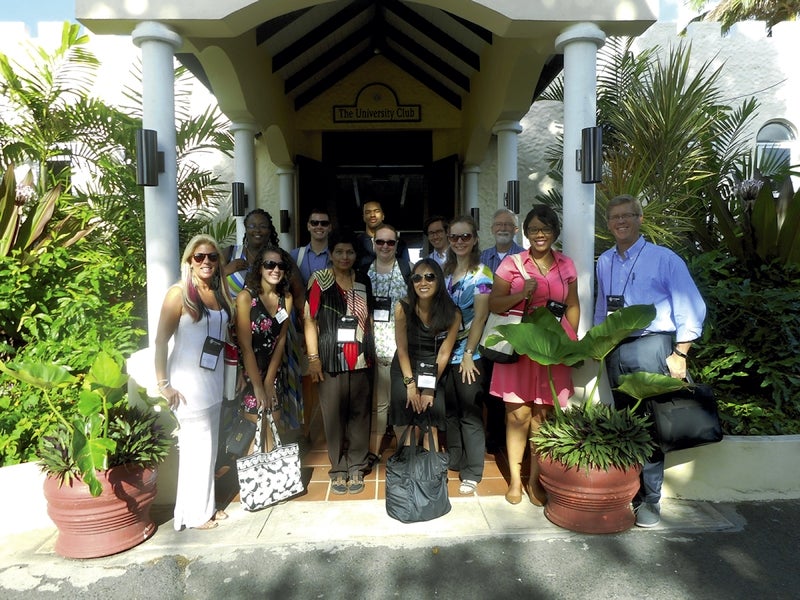Dr. Sashi Sabaratnam: Our visit to St. George’s University in Grenada, West Indies
Published 12:00 am Sunday, December 18, 2016

- 1. Participants in the front of University Club.
Dr. Sashi Sabaratnam, professor of biology and health sciences adviser Livingstone College
A health-adviser visitation program at St. George’s University in November gave me an opportunity to visit the campuses of the school of medicine, founded in 1976, and the school of veterinary medicine, established in 1999.
The school of medicine has evolved into a top center of international education, drawing students and faculty from 140 countries. The university offers medical and veterinary degrees and graduate degrees in the sciences, public health and business. Undergraduate degree programs are also offered by the school of arts and sciences.
The main “True Blue campus” is in the southwestern corner of Grenada overlooking the Caribbean sea. The second smaller campus is located in the nearby Grand Anse. St. George’s University is affiliated with educational institutions worldwide, including the U.S., the U.K., Canada, Australia and Ireland.
The 12 participants from different states of the U.S. stayed in the university club housing located on the beach. In the conference, there were presentations on admission processes and requirements of the school, academic programs available, financial aid, student support, housing and more.
We were given guided tours of labs, clinics, library and dormitories. The three-day conference also informed the participants about the student support services and student life on campus. We had the opportunity to interact with medical and veterinary students. The participants were given a guided tour of the island on the last day before departure.
The island of Grenada is one of the most scenic islands in the Caribbean. It lies at the southernmost tip of the Windward islands. It is 21 miles long and 12 miles wide with an area of 120 square miles. Grenada has more than 40 picturesque white sand beaches with turquoise waters and natural forests. Grenada is also referred to as Spice Island, because there are more spices grown per square mile than any other place on the planet.
The climate is tropical, with an average temperature around 80 degrees. It rained during our visit. The rainy season is from June to December.
Flowering plants and vegetation are lush and abundant. Bougainvilla is the national flower of the island. Agriculture is based on nutmeg, cocoa, sugarcane and bananas. These items are sold in markets and roadside shacks at many places. Tropical trees like bananas, mangoes, papaya, avocado, cocoa, nutmeg and cinnamon are seen growing along the sides of roads. Parrots, monkeys and frogs dominate the native fauna.
The islanders exhibit a blend of African, English and French cultures. The island has public and private schools. The official language of Grenada is English.
Accommodations range from luxury hotels to modest villas. The buildings have French and English colonial architecture. Tourism attracts visitors from all over the world. The beach is very close to any location on the island. The restaurants on the beaches offered delicious island cuisine consisting of meat, seafood and plenty of vegetables cooked with native spices.
The participants visited Annandale waterfalls located in the middle of a scenic rain forest and a botanical garden. This beautiful waterfall attracts a lot of visitors. Parks and natural wildlife sanctuaries are plentiful around the island. In our visit to a nutmeg factory, we learned how nutmeg is sorted and processed for export. A guided tour in a rum factory showed us how rum is made from sugarcane. The visitors were offered an array of rum to taste and buy from this facility.
We spent time at Grand Anse beach and Coconut beaches. We enjoyed island cuisine offered in the beachfront restaurants. The hospitality of Grenadians was seen in many places we visited. Overall this trip was very informative and enjoyable.





